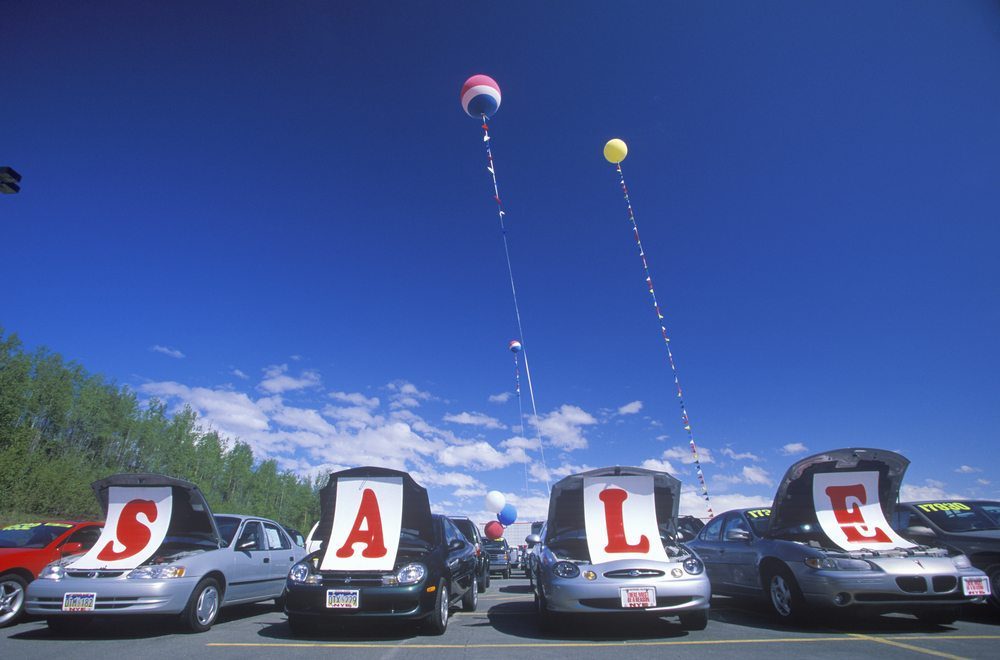If more than half of your units are at least 30 days old, it’s time to perform more analytics. BY DALE POLLAK
I would encourage franchised dealers that also sell used vehicles to do a little investigative work into their store’s performance with used inventory. This investigation would consist of two steps.
First, dealers should examine the front-end gross profits of their retail units by age segments. That is, they should determine the average gross that their dealerships achieved for vehicles that sold in seven days or fewer, those that sold in seven to 15 days, 16 to 21 days, 21 to 30 days, 31 to 45 days, and 46 days or more.
Second, dealers should determine what percentage of their total monthly sales fall into each age segment.
If you’re like most dealers, the first step of this exercise would starkly reveal the importance of increasing the velocity of your used vehicle sales. When I’ve conducted this exercise with dealers across the country, I’ve seen that front-end gross profits typically diminish over time and get dramatically worse after 30 days.
In fact, when my company has looked closely at gross profits for used vehicles retailed after 30 days (and especially for those that needed more than 45 days to sell), it has not been uncommon to see more units retailed at a loss than those that achieving even a minimal profit.
Less Time To Sell Before A Loss
This exercise and our findings underscore an important reality of today’s used vehicle market that many dealers have yet to recognize. The combination of increased competition, pricing transparency and price volatility has compressed the timeline under which a used vehicle can deliver an acceptable return on investment.
The second part of the exercise often shows that dealers are retailing more used vehicles than they should after 30 days. At a minimum, given today’s market conditions, I believe it’s imperative that dealers maintain at least 50 percent of their used vehicle inventory at under 30 days of age. This operational standard effectively forces dealers to pay more attention and apply more discipline to selling a greater share of their used vehicle inventory within 30 days, in order to maximize front-end gross and ROI.
However, now comes the critical question: How can dealers achieve this more efficient, profitable and faster rate of used car sales? I recommend four operational best practices:
1) Know each unit’s potential up front. This can’t be someone’s best guess or hunch, given the realities of today’s used vehicle marketplace I noted earlier. Rather, dealers should use technology and tools to estimate how many competing vehicles a particular unit will face if acquired, and how quickly it might sell.
With these insights, a dealership can chart a market-informed, time-sensitive retail course for every unit. You’ll know right away if you need to work harder from a pricing or marketing perspective to ensure the used vehicle sells quickly and maximizes its profit potential. Conversely, you’ll also have better insights about whether you’ve got a true-blue winner that will draw buyers to you who will pay your asking price.
2) Address “get ready” inefficiencies that slow your sales velocity. There are two areas of inefficiencies that often hurt a dealership’s ability to increase the rate of its used vehicle retail sales. These typically occur after a vehicle has been acquired, during what you might call the “get ready” phase of its retail lifecycle.
The savviest dealers recognize that it’s no longer acceptable to lose a week or more of a used vehicle’s retail timeline waiting for the service department to recondition the car. They’ve designated specific processes and technicians to get the cars retail-ready in three days or fewer. Some dealers have made reconditioning even more of a time-sensitive priority, requiring a 24-hour turnaround unless there’s a good reason for a longer delay.
The second “get ready” challenge relates to marketing and merchandising each vehicle online. Dealers have differences of opinion on whether it’s okay to post descriptions, photos and videos of a vehicle before it’s fully reconditioned and detailed. Either way, dealers should recognize that every day lost waiting to promote a used vehicle online – fully merchandised and ready for sale – slows their sales velocity and diminishes the prospect for full gross profit potential on each vehicle.
 3) Strike a balance between front-end profit and turn in your pricing. With a 30-day window to truly maximize a used vehicle’s front-end gross profit potential, it’s imperative that dealers price their vehicles competitively from Day One. The operative word is “competitively” – meaning, your initial asking price should reflect a vehicle’s value in relation to competing units on the market.
3) Strike a balance between front-end profit and turn in your pricing. With a 30-day window to truly maximize a used vehicle’s front-end gross profit potential, it’s imperative that dealers price their vehicles competitively from Day One. The operative word is “competitively” – meaning, your initial asking price should reflect a vehicle’s value in relation to competing units on the market.
The best dealerships use technology and tools to calculate each used vehicle’s pricing sweet spot. They recognize there’s little room in today’s market for pricing guesswork and imprecision. They know that vehicles priced above the marketplace, without proper cause or justification, are effectively biding time until a future price cut finally makes them more attractive to buyers.
Dealers often ask how often they should revisit their used vehicle pricing. To be sure, you can’t simply apply a “set it and forget it” approach to pricing used cars.
However, each local market behaves a little differently. Some dealers find it’s necessary to assess the price-to-market metric for their used vehicles on a near-daily basis, given the aggressive competition and market volatility they face. Others conduct this assessment once or twice a week, and adjust prices accordingly.
4) Strive for a maximum 45-day retail timeline. Once dealers recognize that used vehicles largely lose their ability to deliver a sufficient ROI after 30 days, many adopt a 45-day retail timeline. It’s important to note that this 45-day standard isn’t treated as wishful thinking; it’s a firm expectation.
It reflects a dealer’s understanding that any vehicle that doesn’t retail within 45 days reflects a failure by managers to maximize the dealership’s expectations for a sufficient ROI. In some cases, dealers hold their used vehicle managers accountable to this standard through compensation plans that either reward them for retailing a larger share of units in fewer than 45 days, or penalize them when they miss the mark.
Dealers who consistently adhere to these best practices will typically find that they are able to stock fewer cars while selling more units every month. This higher level of operational efficiency often translates to an annualized inventory turn rate of 12 to 13 times or more.
But even better, dealers who make used vehicle sales velocity a top priority discover the real benefit of their newfound emphasis on efficiencies – their dealership net profits increase as the F&I, parts and service departments all benefit from higher-performing, more productive used vehicle operations.








